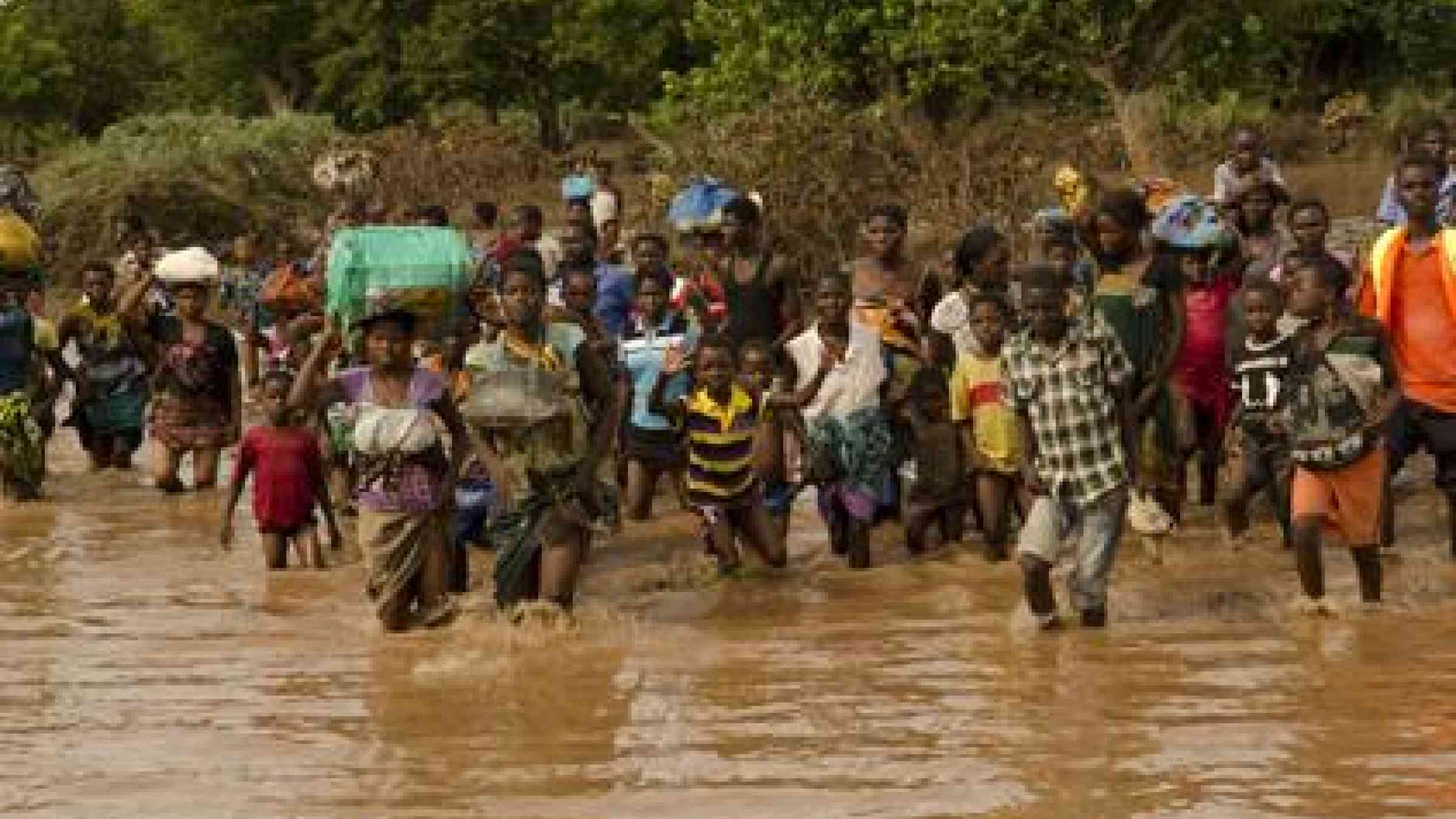
GENEVA, 4 February 2015 - Efforts to finalise the successor to the world’s most encompassing framework on disaster risk reduction have taken a leap forward, with the issue of health taking it into new territory.
“I’d say we’re around 90 percent there,” said Margareta Wahlström, Special Representative of the United Nations Secretary General for Disaster Risk Reduction.
Health is a cornerstone of resilience, which in turn underpins the draft “HFA2” – a major upgrade of the 10-year-old Hyogo Framework for Action.
The human, social, and economic impact of epidemics such as Ebola, bird flu or HIV/AIDS can be as serious as an earthquake. But health challenges also go hand in hand with other challenges that increase vulnerability to disasters, such as poverty and climate change. Disasters can also sow havoc in health services, compounding that vulnerability.
Traditional disaster risk reduction has been hazard-focussed and, while addressing issues such as earthquake- or flood-proofing hospitals, has not had health squarely in its sights. Beyond obvious emergency needs, health has tended to be considered the domain of the health sector alone. Protecting health, however, can help communities bolster their ability to deal with other hazards. And involving communities in crafting health programmes can complement disaster risk awareness and mitigation.
The HFA2 is due to be adopted at the 3rd UN World Conference on Disaster Risk Reduction in Sendai, Japan, from 14-18 March. It will charting a global course for the coming decade.
UN member states held a negotiating marathon last week, smoothing away many remaining differences in the draft. They are set to meet on the eve of the Sendai conference to finalise outstanding issues.
“I have no doubt that countries will agree on it,” Wahlström said.
They have already set four priorities for the new framework: understanding disaster risk; strengthening how institutions manage it; increasing investment in resilience; and enhancing preparedness to make response and recovery more effective. All these priorities apply to health emergencies as for other emergencies.
To give those priorities teeth, seven targets have been sketched out: reduce the disaster death toll; cut numbers affected by disasters; rein in economic losses; stem damage to critical infrastructure; scale up national risk reduction strategies; increase funding and international cooperation; and improve public access to early warning and disaster information. Again all these targets are used to measure the impact of health emergencies as they are for other emergencies.
“I think the discussions on targets have been quite constructive,” said Wayne McCook, Jamaica’s UN ambassador, who has been acting as facilitator for the negotiations.
“We have identified the key issues on which there is convergence and understand the areas in which there is still work to do,” he added.
Areas still to be resolved include whether to set percentage or time-bound targets for reducing mortality and economic losses, or how to define the responsibility for funding risk reduction programmes and their relationship to broader development projects.
“We’ve never had quantitative targets before, and now we’re getting very close to such targets for economic losses and mortality. There’s also an interesting discussion on defining affected people,” said Wahlström.
The draft underlines that, while states bear overall responsibility to reduce disaster risk, they share it with other stakeholders, including businesses and civil society groups, the academic world and the media. It also spells out the importance of involving women, youth, persons with disabilities, the elderly, indigenous people and migrants in risk reduction.
The original HFA was adopted in 2005 at the 2nd UN World Conference on Disaster Risk Reduction, also hosted by Japan, just weeks after the Indian Ocean Tsunami -- a tragedy the spotlighted the need for proper preparedness. The HFA has been a compass for global risk reduction efforts. Its focus has been reducing losses in terms of lives and social, economic, and environmental assets. It has also put the focus on understanding what enables risks to remain, or to grow in new areas – from improper land use to environmental degradation, failed or missing building codes, poverty, weak governance, and climate change. That makes a strong Sendai outcome all the more important.
The past decade has underscored the HFA’s importance, amid disasters such as Hurricane Katrina, the Haiti Earthquake, floods and quakes in Pakistan and China, heatwaves and wildfires in Russia and Australia, and the grinding impact of drought in the Horn of Africa. Sendai is a fitting host, having been on the frontline of Japan’s 2011 earthquake and tsunami.
The new framework will draw lessons from those tragedies, in addition to lessons from health emergencies such as pandemic influenza 2009 and the ongoing Ebola outbreak in West Africa. The new framework will also draw on successes such as the creation of the Indian Ocean tsunami early-warning system, a fall of almost one billion in the number of disaster-affected people in Asia, live-saving hurricane evacuations in India, Turkey’s earthquake-proofed schools and hospitals, and huge strides in analysing hazard data and the economic benefits of risk reduction.